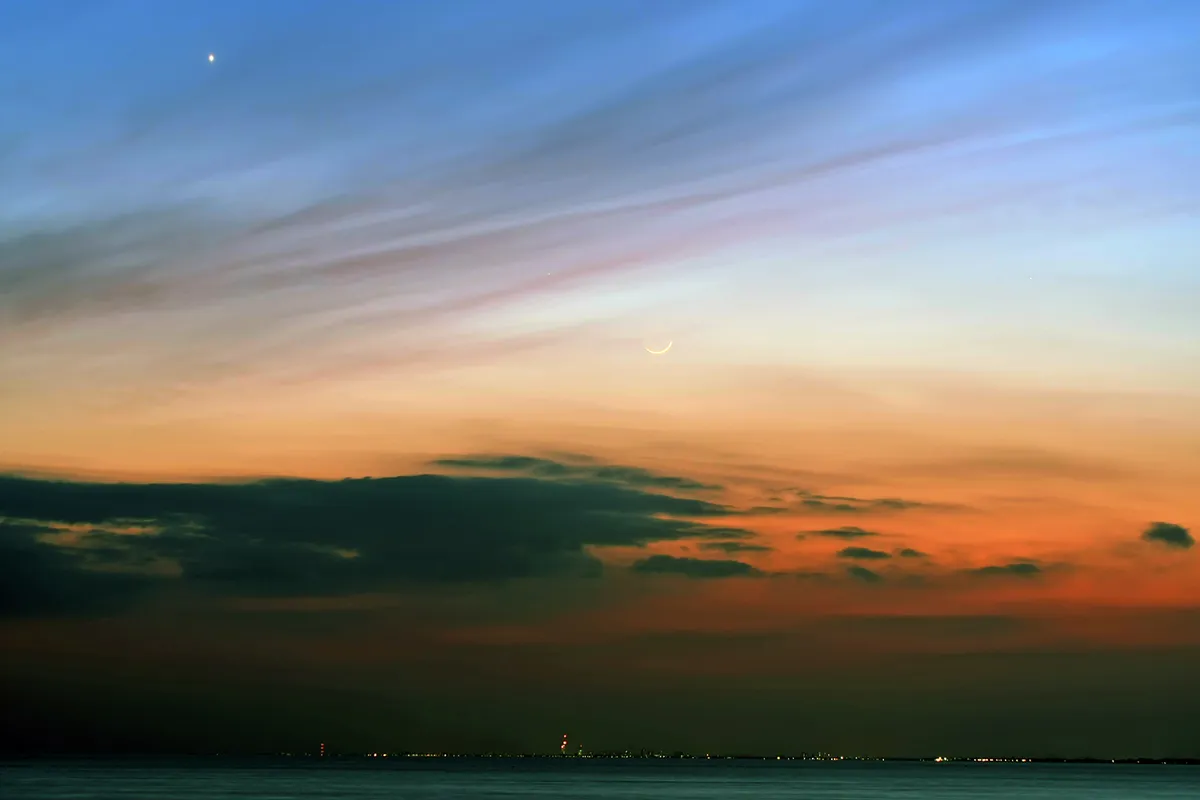On 25 September, the planet Venus will appear very close to a thin crescent Moon in the morning sky, about 40 minutes before sunrise
This will be a wondrous conjunction and well worth getting up early for as it can easily be seen through a pair of ordinary binoculars.
You do need to be careful, however, using magnification this close to sunrise, as viewing the Sun through ordinary binoculars or a telescope could damage your eyesight.
Let's take a look at this upcoming conjunction and go through exactly what we'll see.
For more stargazing advice, sign up to receive the BBC Sky at Night Magazine e-newsletter, listen to our Star Diary podcast or find out what's in the night sky tonight.

When the Moon is presented against a truly dark sky, it’s easy to locate as it dominates the view.
When the Moon is in the daytime sky, it’s less easy to see due to lower contrast, but the thicker phases can still stand out pretty well.
But when the Moon appears in the daytime sky or twilight periods with a phase less than 2%, it becomes significantly trickier to pick out.
When it’s presented with a phase less than 1% it’s downright difficult!
This will be the case on the morning of 25 September 2022: a 0.6%-lit waning crescent Moon situated 8˚ from the Sun.
This is an interesting arrangement for several reasons. The ecliptic makes a steep angle with the eastern horizon at this time of year before sunrise.
This means that the Moon, which never moves that far from the ecliptic, will be optimally placed above the horizon before sunrise.

In addition, there’s a theoretical limit as to how far a Moon can be from the Sun before it becomes invisible.
This value is known as the Danjon limit and is usually quoted as about 7˚.
The morning Moon on 25 September is perilously close to this value, with an actual separation value of 7.9˚ from the Sun.
But best of all, if you go looking for this particular Moon, you’ll have a guide in the form of the brilliant planet Venus.
If you have a clear view looking towards the eastern horizon on the morning of 25 September, point your binoculars at Venus and in the same field of view, just to the left and up a bit from the planet, there will be that ultra-thin lunar crescent.
If you look but can’t see it, look again removing all preconceptions of how you think the crescent should look. It will be extremely delicate and very tricky to see.
And don't forget: be sure to stop looking before the Sun rises.
This guide originally appeared in the September 2022 issue of BBC Sky at Night Magazine.
